GREEN TECHNOLOGY
We build a world where people live together in harmony with technologies which let the nature breathe.

R&Ds
CAR BODY
Lightweight car body, light but strong!
Based on our advanced technologies accumulated by keeping pace with the growth of automotive parts industry, we are promoting technology innovation through the development of light and strong new materials and lightweighting technology after continued R&Ds.

Advanced High-strength Steel Forming
-
Roll Forming
- Progressive plastic deformation-based technology with certain cross-sectional shapes, using multiple paired (top-bottom or left-right) roll molds
- Useful in product formation which uses high-strength steel sheet
- Mass production enabled through consecutive process; great productivity with little mold replacement and process setup time
-
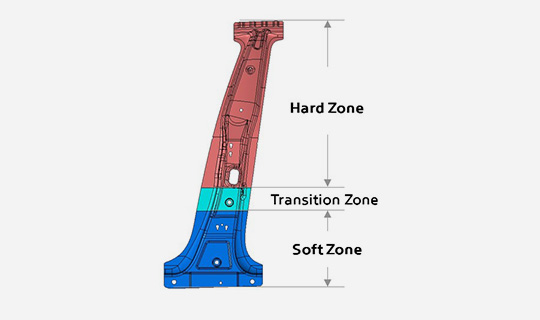
Local Softening Hot Stamping
- Hot-stamping forming technology which forms multiferroic properties through different applications during partial warm molding
- Enables parts integration and lightweighting (able to enable multi-strength and keep passengers safe through crash energy absorption)
Lightweight/Composite Material Forming
-
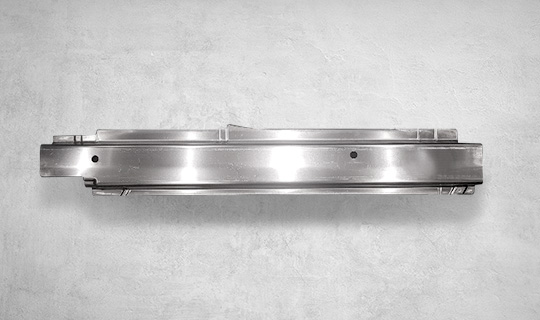
Aluminum Hot Press Forming
A forming process using press after preheating steel plate; divided into warm forming and hot forming; applied differently depending on the type/purpose of the material or product
-
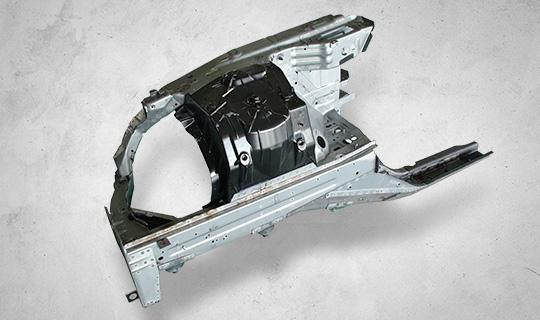
Die-casting Forming
- A forming process to acquire the same casting with the mold by injecting molten metal into the mold of the steel machined to be matched with a required shape; good design freedom compared to steel panel press forming
- Light car body and product integration, using lightweight materials (e.g., aluminum, magnesium, etc.)
-
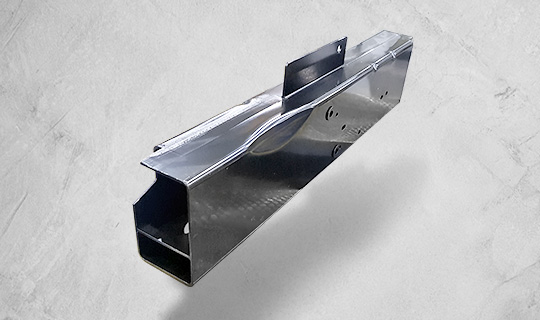
Extrusion Molding
A metal-working process used to manufacture long bars or plates with a homogeneous section; designed to produce long products which are smaller than a material (billet) in terms of a sectional area by inserting it into the container and pressing with die (mold)
-
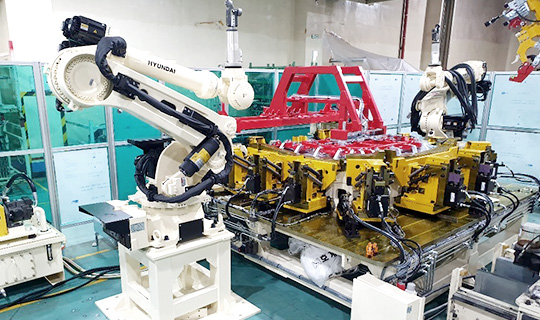
Aluminum Hybrid Roll Hemming
- Applied to aluminum hood, door and others; a joining method by bending the end of the outer aluminum plate and contacting it to the inner plate
- Pre-hem apparatus; hybrid technology which joins after contact the end of the outer plate to the inner plate, using the roller assembled to a robot after pre-hemming at 30 degrees or lower in terms of medial angle of the end
-
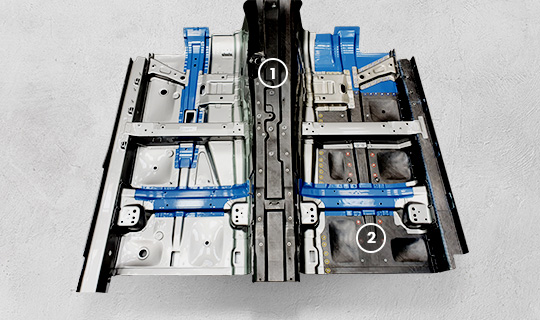
1 - Composite-Material PCM Forming
- Prepreg: A material comprised of carbon fiber and resin
- Designed by mounting a workpiece (prepreg) in the mold and hardening it by applying heat and pressure with a goal of making target parts
2 - Composite-Material RTM Forming
- Impregnates resin to the fiber after inserting resin and hardener into the mold through a mixing head
- Hardens resin with constant pressure and temperature, completing products
-
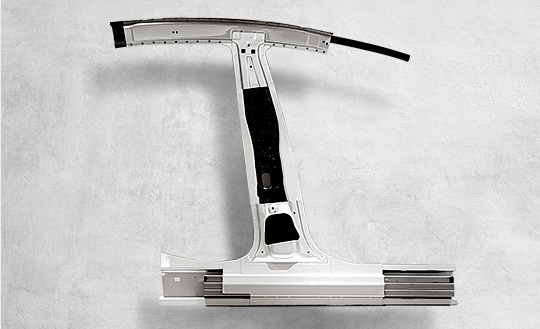
Composite-Material Hybrid Simultaneous Forming
- Makes separate B-PLR with a metallic or non-metallic material
- Pre-forms the inner reinforcing material (REINF) with the workpiece (prepreg)
- Closes the mold by mounting preform material, adhesive and B-PLR in order
- Formed by constant pressure and temperature, completing the product
Welding/Joining Technology
-
Aluminum Laser Welding
At laser welding, aluminum reveals low process efficiency and causes a weld defect such as porosity and crack due to high reflected light and shrinkage compared to steel. Therefore, it can supply filler wire or modulate laser beam to reduce such problem and get good weld quality. For lightweighting and improvement of productivity, we applied it to doors for the first time in the Republic of Korea.
-
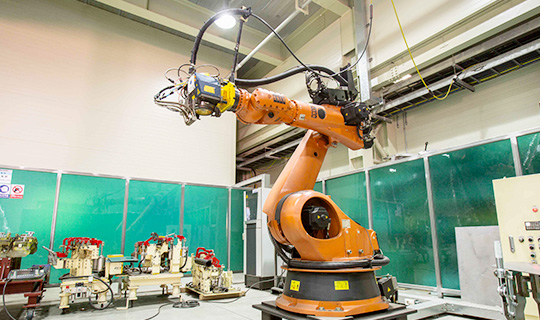
Roll Laser Welding
A process used in roll forming and welding by adopting a high-speed laser radiation system called ‘scanner’ for consecutive joining on the cross section of the rail-shaped product which has been progressively formed through roll forming; This technology expected to b enhance productivity through process reduction and representation of high quality; commonly used in the manufacture of bumper back beam
-
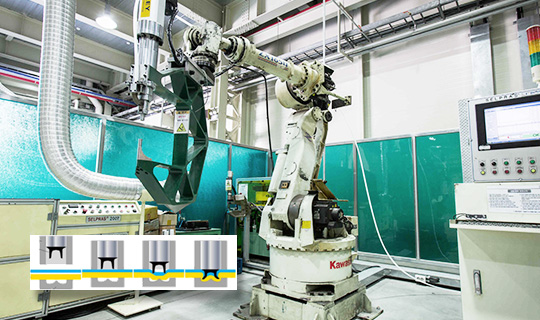
Self-Piercing Rivet (SPR)
A joining system which forms an interlock by making the rivet pierce through base metal by pressure from the servo press and deforming the base metal through the expansion of the rivet by diet simultaneously
-
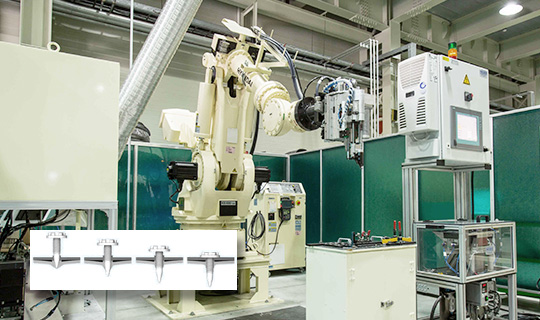
Flow Drill Screw (FDS)
A process joining in a one direction through the formation of threads on the base metal by softening and drilling a workpiece through frictional heat generated by high-speed rotation
-
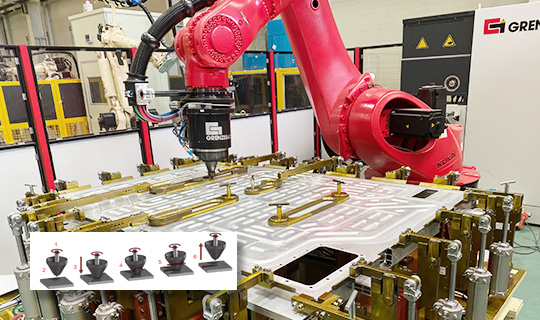
Friction Stir Welding (FSW)
A solid-state joining process at temperature lower than a melting point for the workpiece, using frictional heat generated between the workpiece and rotating tool
-
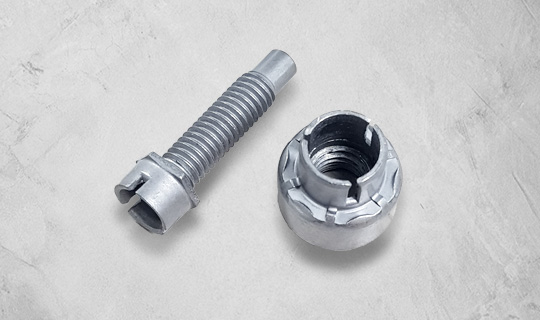
Rivet Joining Nut (RJN) / Rivet Stud Bolt (RSB)
A method to insert the rivet into the pre-processed pre-hole base metal and assembling it to the base metal through plastic deformation, using die

